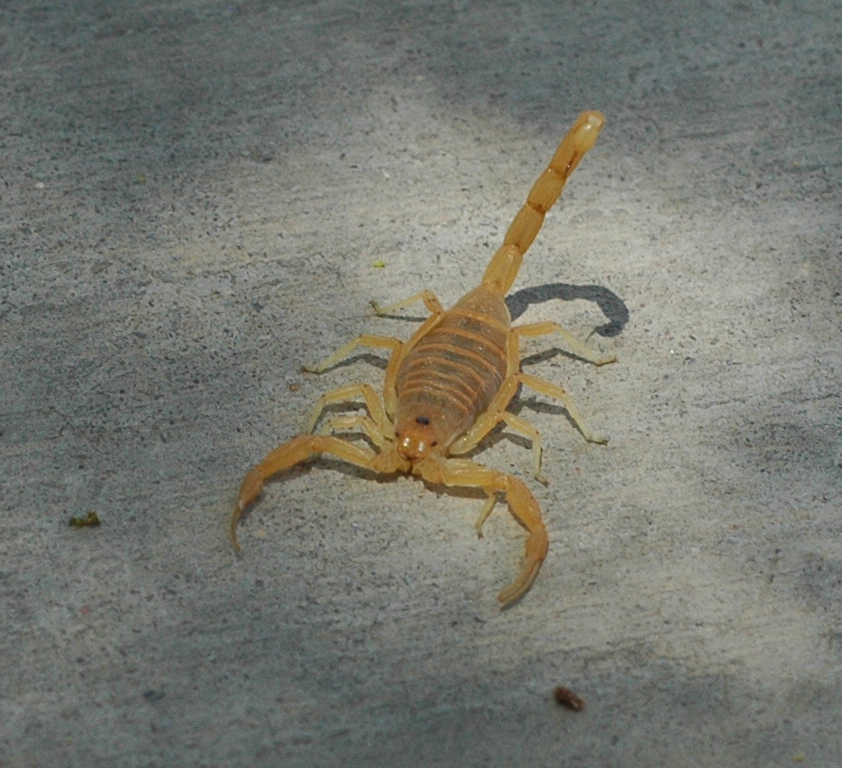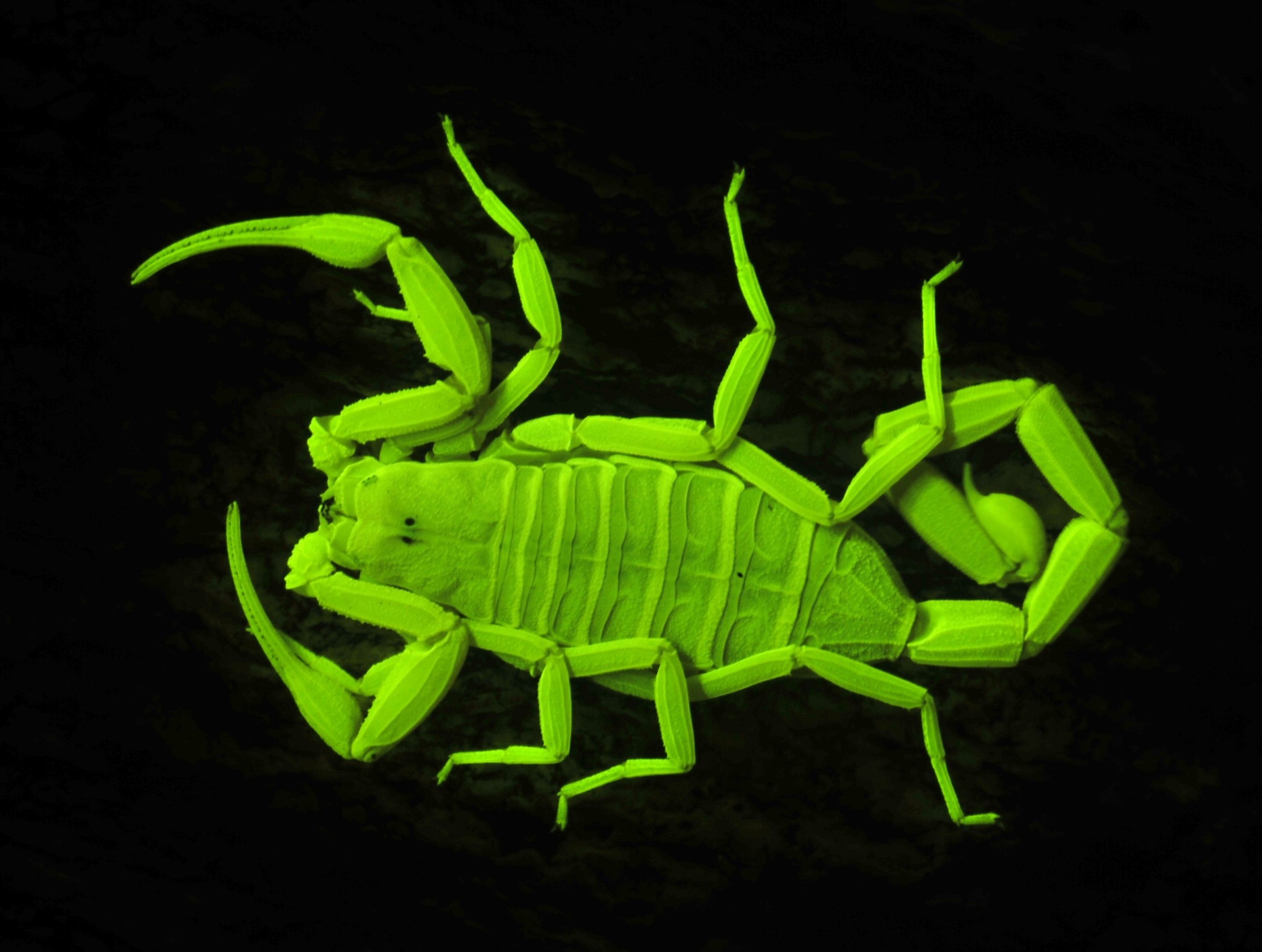Summary
The Arizona bark scorpion (Centruroides sculpturatus, once included in Centruroides exilicauda) is a small light brown scorpion common to the Sonoran Desert in the southwestern United States and northwestern Mexico. An adult male can reach 8 cm in length (3.14 inches), while a female is slightly smaller, with a maximum length of 7 cm (2.75 inches). - The striped bark scorpion and the closely related Baja California bark scorpion are also called bark scorpions.
Tags
Scientific classification
People often ask
Predators
Arizona bark scorpions are eaten by a wide variety of animals such as pallid bats, birds (especially owls), reptiles, and other vertebrates. Some examples include spiders, snakes, peccaries, rodents, and other scorpions. Development, pesticides and collecting scorpions for research or the pet trade also reduces the bark scorpion population. The painful and potentially deadly venom of Arizona bark scorpions has little effect on grasshopper mice. Scientists have found the scorpion toxin acts as an analgesic rather than a pain stimulant in grasshopper mice.
Life cycle
Arizona bark scorpions have a gestation period of several months, are born live, and are gently guided onto their mother's back. The female usually gives birth to anywhere from 25 to 35 young. These remain with their mother until their first molt, which can be up to 3 weeks after birth. Arizona bark scorpions have a life expectancy of about 6 years. Arizona bark scorpions, like most other scorpions, are incredibly resilient. During US nuclear testing, scorpions, along with cockroaches and lizards, were found near ground zero with no recorded adverse effects.
Venom
The Arizona bark scorpion is the most venomous scorpion in North America, and its venom can cause severe pain (coupled with numbness, tingling, and vomiting) in adult humans, typically lasting between 24 and 72 hours. Temporary dysfunction in the area stung is common; e.g. a hand or possibly arm can be immobilized or experience convulsions. It also may cause loss of breath for a short time. Due to the extreme pain induced, many victims describe sensations of electrical jolts after envenomation. Two recorded fatalities have occurred in the state of Arizona since 1968; the number of victims stung each year in Arizona and New Mexico is estimated to be in the thousands.

Antivenom
An antivenin was developed for this species at Arizona State University by Dr. Herbert L. Stahnke, and produced in quantities sufficient to treat individuals within the state of Arizona. This antivenin was not FDA approved, but use within the state of Arizona was allowable and very successful in shortening the duration of symptoms and hospitalization. Production of this antivenin ceased by 2000 and the product was unavailable by 2004. A Mexican-produced antivenin, Anascorp [Antivenin Centruroides (scorpion) F(ab′)2, Laboratorios Silanes, Instituto Bioclon SA de CV], received FDA approval on August 3, 2011, and is now in use.
First aid
Basic first aid measures can be used to help remediate Arizona bark scorpion stings: - Clean sting site with soap and water - Apply a cool compress (cool cloth) - Take acetaminophen (paracetamol) or ibuprofen for local pain and swelling
Medical emergencies
Arizona poison control centers suggest immediate medical attention if severe symptoms occur, particularly in young children. The Poison Center may be reached at 1-800-222-1222.
UV lighting
Arizona bark scorpions, like most other scorpions, will glow when exposed to a blacklight. This is particularly useful in scorpion detection, since Arizona bark scorpions are active during the night, and can be easily spotted using this method. Typical UV LED flashlights enable their human operator to readily detect Arizona bark scorpions at a distance of approximately six feet. Newly molted Arizona bark scorpions will not glow under ultraviolet light for a few days after molting.

Control and prevention
Arizona bark scorpions are tan or light beige tone in color and very small, making them difficult to detect especially on natural terrain (rocky land, multiple vegetation and soil textured land). They are not known to seek out people, but look for places to hide unless provoked or defending their young. Several methods of control have historically been used to control Arizona bark scorpions, such as physical barriers (scorpions are unable to climb smooth surfaces), pesticides, glue boards, and removing any scorpion congregation areas in the vicinity of the building.